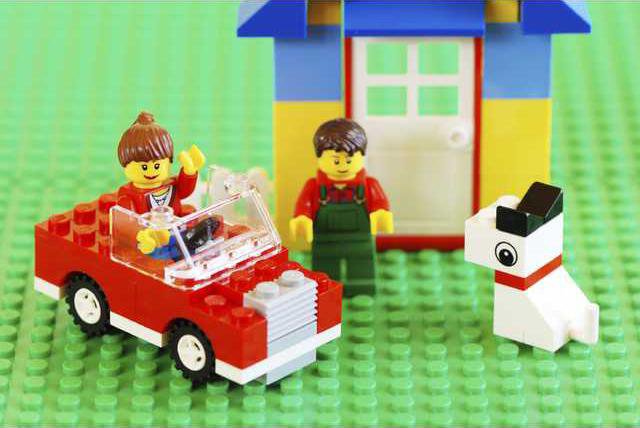Should a girl under 12 care how flattering her hair is?
Not according to some parents, who are angry at a layout in Lego Club Magazine, which offered beauty tips for girls ages 5-12 using the brand's controversial girl-specific play set, Lego Friends.
Rather than the androgynous yellow-faced blockhead figures and colorful building blocks, Lego Friends feature feminized play figures that dwell in building sets like Heartlake Hair Salon, where the magazine article was set.
Lego Friends was met with some skepticism when it was first introduced in 2011, saying it hoped to attract more girls to the brand.
"They're definitely running a risk here of reinforcing some stereotypes, even as they try to break down the ones about girls building," Bloomberg Businessweek's Bradley Weiners told NPR at the time.
The feature urged girls to match their haircuts with the shapes of their faces in order to "look great," as well as experiment with barettes and bows.
Some parents took to Twitter to complain, many of them tweeting pictures of Lego ads from the 1980s, depicting a little girl holding a structure built of Legos, bearing the tagline, "What it is is beautiful."
While Lego brand relations director Michael McNally issued an apology for the magazine editorial, Lego has pointed out repeatedly that its decision to make sets specifically for girls came from four years of market research not to pigeonhole girls, but to get more girls building.
"The age of 4, when kids are aging into Lego's smaller brick sets, instead of the large Duplo bricks aimed at preschoolers, is also around the time that children become more conscious of gender and about how to define themselves," NPR wrote of the Lego Friends set when it first launched. "It's not all Lego's fault."
But with gender branding in toys becoming a more hot-button issue than ever, some parents say toy manufacturers like Lego need to find other ways to help children define themselves beyond gender.
New York Times parenting Motherlode blogger Sharon Holbrook dedicated an entire post to her frustration of her 7-year-old daughter fretting over her hair for the first time after reading the magazine article.
"I had placed a certain amount of trust in Lego and its apparently good intentions, but I draw the line when even a construction toy company feeds my daughter that tired, toxic script of 'start fixing your appearance, and now,'" Holbrook wrote.
Not according to some parents, who are angry at a layout in Lego Club Magazine, which offered beauty tips for girls ages 5-12 using the brand's controversial girl-specific play set, Lego Friends.
Rather than the androgynous yellow-faced blockhead figures and colorful building blocks, Lego Friends feature feminized play figures that dwell in building sets like Heartlake Hair Salon, where the magazine article was set.
Lego Friends was met with some skepticism when it was first introduced in 2011, saying it hoped to attract more girls to the brand.
"They're definitely running a risk here of reinforcing some stereotypes, even as they try to break down the ones about girls building," Bloomberg Businessweek's Bradley Weiners told NPR at the time.
The feature urged girls to match their haircuts with the shapes of their faces in order to "look great," as well as experiment with barettes and bows.
Some parents took to Twitter to complain, many of them tweeting pictures of Lego ads from the 1980s, depicting a little girl holding a structure built of Legos, bearing the tagline, "What it is is beautiful."
While Lego brand relations director Michael McNally issued an apology for the magazine editorial, Lego has pointed out repeatedly that its decision to make sets specifically for girls came from four years of market research not to pigeonhole girls, but to get more girls building.
"The age of 4, when kids are aging into Lego's smaller brick sets, instead of the large Duplo bricks aimed at preschoolers, is also around the time that children become more conscious of gender and about how to define themselves," NPR wrote of the Lego Friends set when it first launched. "It's not all Lego's fault."
But with gender branding in toys becoming a more hot-button issue than ever, some parents say toy manufacturers like Lego need to find other ways to help children define themselves beyond gender.
New York Times parenting Motherlode blogger Sharon Holbrook dedicated an entire post to her frustration of her 7-year-old daughter fretting over her hair for the first time after reading the magazine article.
"I had placed a certain amount of trust in Lego and its apparently good intentions, but I draw the line when even a construction toy company feeds my daughter that tired, toxic script of 'start fixing your appearance, and now,'" Holbrook wrote.





